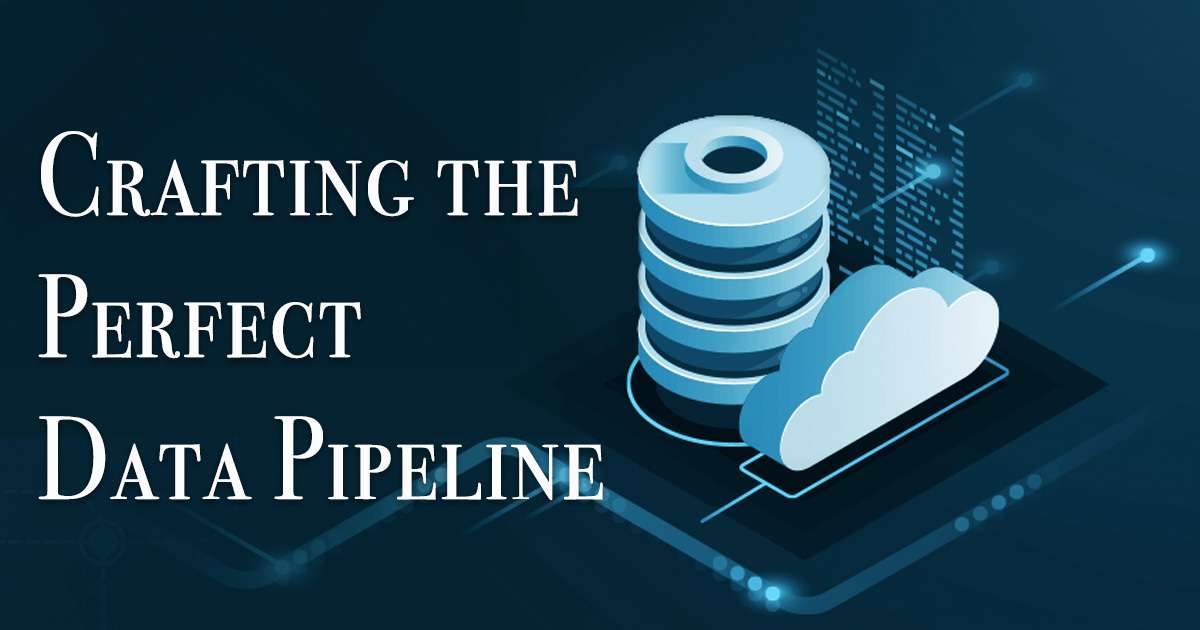Crafting the Perfect Data Pipeline: Your Step-by-Step Guide

According to Accenture, 89% of companies see big data as crucial for digital transformation, and 82% find it valuable for their companies. When talking about big data, businesses and organizations rely on efficient data pipelines to manage and analyze their data.
An efficient data pipeline ensures that data travels seamlessly from the source to the destination, allowing for better decision-making and insights. See the process of building a data pipeline, focusing on key steps and best practices.
What is a data pipeline?
A data pipeline is a set of operations for moving data from one system to another. It involves data collection, transformation, and storage, with the ultimate goal of making the data accessible and useful for analysis. Understanding how to build a data pipeline involves mastering the steps and technologies required to handle data efficiently.
Why create a data pipeline?
Building data pipelines is crucial for several reasons:
- Efficient Data Management: Automates data management, reducing manual intervention and errors.
- Real-Time Insights: Allows for real-time data processing, resulting in current insights and decisions.
- Scalability: Handles growing volumes of data without performance degradation.
- Consistency: Ensures data is processed consistently and accurately across various systems.
What are key steps in building a data pipeline?
Creating a data pipeline involves several important steps. Each step is critical for making sure that your pipeline operates properly and satisfies your data requirements.
Step 1: Define Your Goals
Before you start building the data pipeline framework, you need to understand what you want your data pipeline to achieve. Ask yourself:
- What type of data do you need to collect?
- What insights are you hoping to get from this data?
- Who will use this data, and what do they need from it?
Clear goals will help you design and build your data pipeline effectively.
Step 2: Choose Your Data Sources
Determine where your data will originate from. Data can come from:
- Databases: For example, SQL or NoSQL databases are used to store data.
- APIs: External services that deliver data in real-time or at regular intervals..
- Files: Like CSV, JSON, or XML files that contain data.
Understanding your data sources will help you figure out how to collect and handle the data.
Step 3: Determine the Data Ingestion Strategy
Decide how you will bring data into your pipeline. There are two main methods:
- Batch Processing: Collect data at set times (e.g., every hour or day). This works effectively with big amounts of data that do not need to be processed right away.
- Stream Processing: Continuously collect data as it comes in. This is best for situations where real-time data is needed, like live dashboards.
Step 4: Data Extraction
Next, you need to extract the data from your sources:
- Connect to Data Sources: Set up connections to your databases, APIs, or files.
- Pull the Data: Use scripts or tools to get the data you need.
- Capture Necessary Fields: Make sure you get all the important data.
Step 5: Data Cleaning and Transformation
Once the data is extracted, it often needs cleaning and transformation:
- Remove Duplicates: Get rid of duplicate entries to keep the data accurate.
- Handle Missing Values: Decide how to address gaps in the data—whether to fill them in, remove the incomplete records, or use other techniques.
- Standardize Formats: Ensure that all data is in a consistent format, such as converting dates or normalizing text.
- Data Enrichment: Integrate data from multiple sources to provide additional context or insights.
Step 6: Loading Data into the Destination
After cleaning and transforming, load the data into your destination system:
- Data Warehouses: Central places for structured data that are used for analysis and reporting.
- Data Lakes: Unstructured data can be stored in vast numbers.
- Databases: For immediate use or operational purposes.
Make sure the data is loaded correctly and efficiently.
Step 7: Monitor and Maintain the Pipeline
Once your pipeline is running, you need to keep an eye on it:
- Track Data Quality: Regularly check that the data is accurate and complete.
- Monitor Performance: Watch how quickly data is processed and look for any slowdowns.
- Handle Errors: Set up ways to deal with errors so the pipeline can recover and continue working smoothly.
- Plan for Growth: As your data increases, be ready to scale up your system to handle more data.
By following these steps, you can create a data pipeline that effectively organizes and processes your data.
What are the best practices for building data pipelines?
To make sure your data pipeline works well, follow these best practices:
1. Use a Modular Approach
Build your pipeline in separate, manageable pieces. This way, you can update or fix parts of the pipeline without disrupting the whole system. It makes troubleshooting and improvements easier.
2. Prioritize Data Security
Protect sensitive data throughout the pipeline. Use encryption, control who can access the data, and follow data protection rules to keep your data safe.
3. Document Your Pipeline
Keep detailed records of your pipeline’s design, processes, and any changes made to the data. Good documentation helps new team members learn the system and assists with future updates.
4. Choose the Right Tools
Pick tools that match your needs. Some popular choices are Apache Kafka for processing data streams, Apache Airflow for managing workflows, and various ETL tools for data integration.
5. Test Rigorously
Test your pipeline thoroughly before using it. This includes checking individual parts with unit tests and testing the entire system with end-to-end tests to ensure everything works as expected.
Successfully Build Your Data Pipeline
Building a data pipeline helps you manage and analyze large amounts of data smoothly. Start by setting clear goals and choosing the right sources of data. Follow key steps like extracting, cleaning, and transforming the data to make sure it’s useful. Make your pipeline better by using a modular design, keeping data secure, and picking the right tools. By doing these things, you’ll create a pipeline that effectively supports your organization’s data needs and helps you make better decisions.

